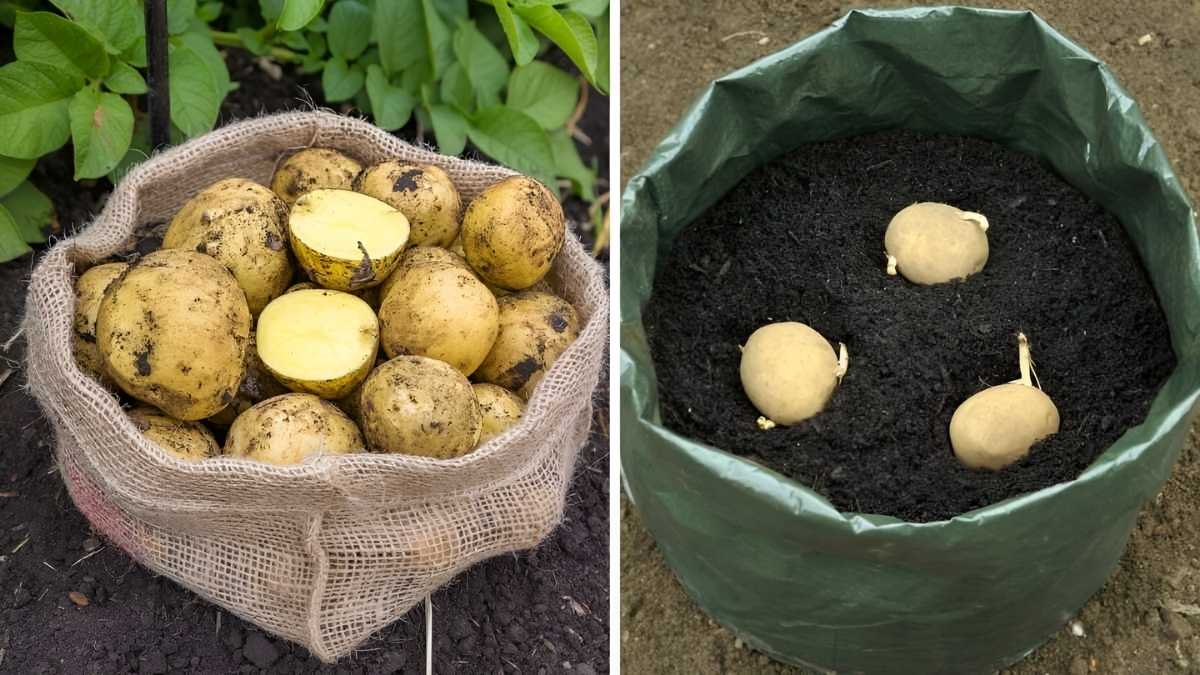Growing organic potatoes at home is a rewarding and cost-effective way to enjoy fresh, homegrown produce. Even if you don’t have a traditional garden space, you can still cultivate these versatile vegetables in grow bags. This method is especially useful for small spaces, balconies, patios, or even indoors. By following a few simple steps, you can enjoy a bountiful harvest of organic potatoes.
Why Grow Potatoes in Bags?
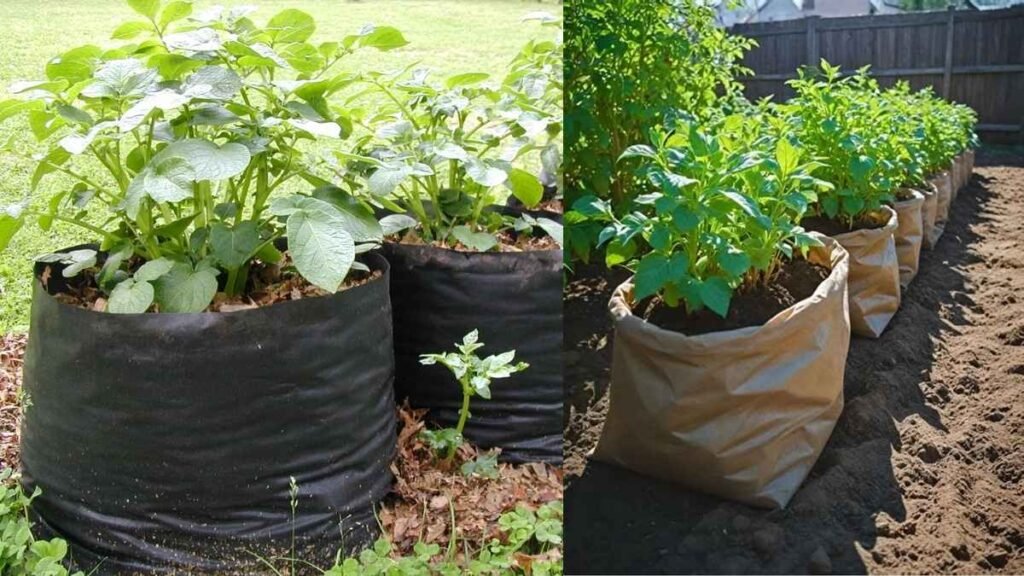
Growing potatoes in bags offers several advantages, especially for those without a garden. It allows for easy access to planting, maintenance, and harvesting. Potatoes grown in bags are less susceptible to pests like aphids and slugs, which can be common problems in open soil. Additionally, the process requires minimal space, making it perfect for urban living or those with limited gardening areas. Moreover, you have full control over the soil quality, which is crucial for growing organic potatoes.
Choosing the Right Potato Variety
The first step in growing organic potatoes in bags is selecting the right variety. There are many types of potatoes to choose from, but not all are suitable for bag gardening. For beginners, consider varieties that are known for their ease of cultivation, such as Yukon Gold, Russet, or Red Bliss. These varieties are hardy and grow well in containers, producing healthy yields.
When choosing organic seed potatoes, it is important to buy from trusted suppliers. Avoid using potatoes from the grocery store, as they may be treated with chemicals that prevent sprouting. Organic seed potatoes are untreated, ensuring your crop remains chemical-free and truly organic.
Selecting the Right Grow Bag
The next step is choosing the right grow bag. Ideally, the bag should be made of breathable fabric, allowing for good aeration and drainage. It should also be large enough to allow the potatoes to grow without being cramped. A bag that holds 10-15 gallons of soil is typically a good size for planting a few potato plants. You can find grow bags specifically designed for potatoes, but any durable container with sufficient drainage will work.
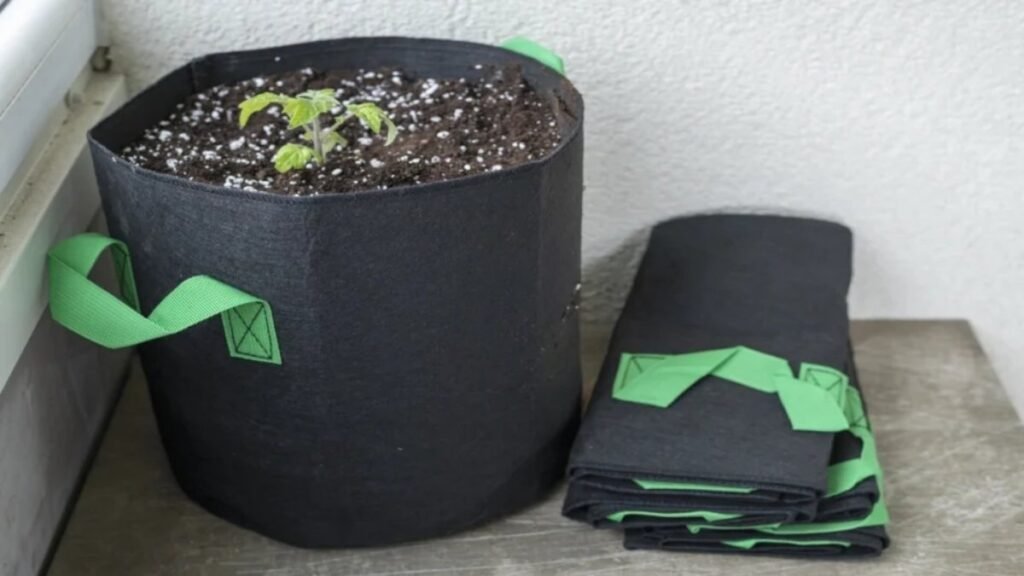
Make sure the bags are placed in a spot where they will receive adequate sunlight—potatoes require at least six hours of direct sunlight each day for optimal growth. If you’re growing them indoors, you may need to use grow lights to supplement natural sunlight.
Preparing the Soil
For growing organic potatoes, it’s essential to use high-quality, organic soil. A well-draining, loamy mix is ideal for potatoes, as it allows the roots to spread out easily and encourages healthy tuber formation. You can create your own soil mix by combining organic compost, garden soil, and perlite or sand for better drainage.
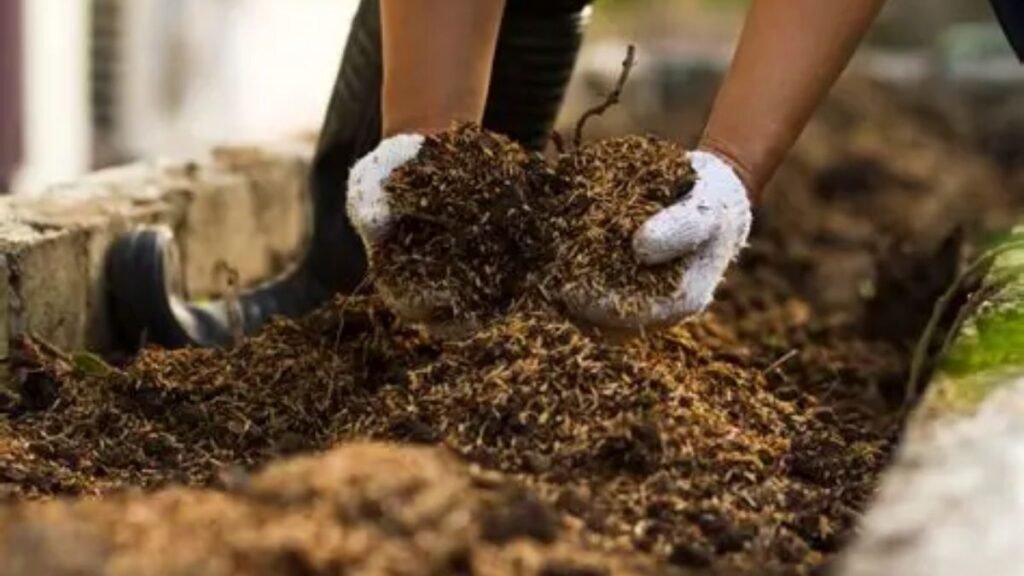
You may also want to mix in a slow-release, organic fertilizer, which will provide the necessary nutrients for the potatoes throughout their growing cycle. Potatoes are relatively heavy feeders, so ensuring that the soil is rich in nutrients will help the plants thrive. However, avoid using synthetic fertilizers, as they could compromise the organic nature of your crop.
Planting Seed Potatoes
Before planting your seed potatoes, you need to “chit” them. Chitting is the process of allowing the seed potatoes to sprout before planting. Place them in a cool, dry location with indirect sunlight for about 2-3 weeks. During this time, small shoots will begin to grow from the eyes of the potato. Once the shoots are about 1-2 inches long, they are ready for planting.
To plant your potatoes in bags, fill the grow bag with a few inches of soil, then place the sprouted seed potatoes on top, spacing them about 6-8 inches apart. Cover the potatoes with about 4 inches of soil, and water gently to moisten the soil. As the plants grow, you will need to add more soil to the bag to cover the potato shoots. This is known as “hilling,” and it encourages the potatoes to produce more tubers along the buried stems.
Caring for Your Potato Plants
Potatoes are relatively low-maintenance once established, but there are a few key factors to monitor as they grow. Ensure your potato plants receive enough water to keep the soil moist, but not soggy. Overwatering can lead to rot, while underwatering can stress the plants and reduce yields.
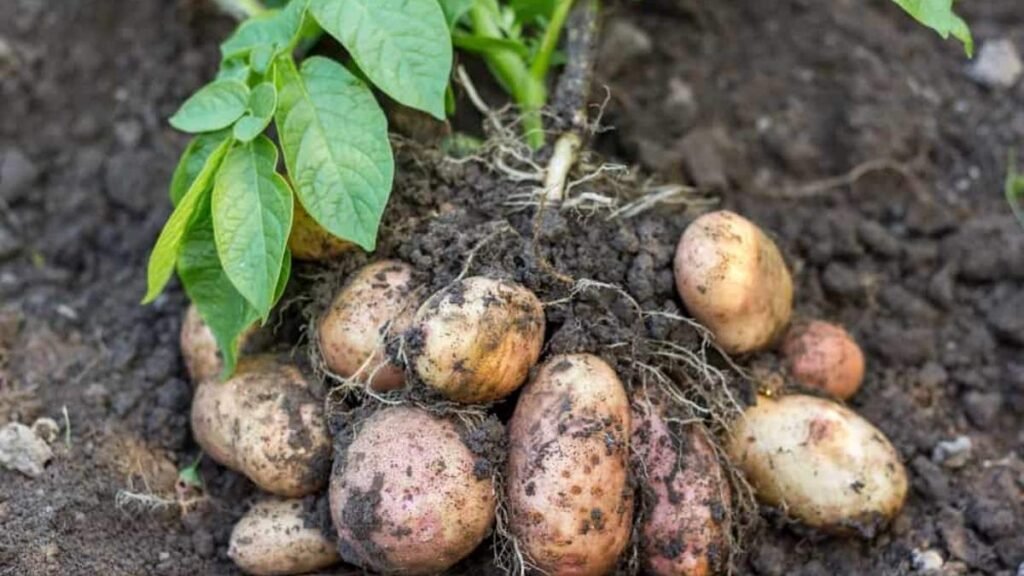
During the growing season, you may notice flowers appearing on your potato plants. While these are beautiful and signal healthy growth, they don’t necessarily indicate that your potatoes are ready to harvest. Keep an eye on the plants and wait until the leaves start to yellow and die back, which signals that the tubers have reached maturity.
Potatoes are also susceptible to pests and diseases, even when grown in bags. To prevent issues, make sure your growing bags are in a sunny, well-ventilated location. If you notice any signs of pests, such as aphids or beetles, treat your plants with organic insecticidal soap or a DIY remedy like neem oil.
Harvesting Your Potatoes
Once your potato plants have matured and the leaves begin to yellow, it’s time to harvest. Gently lift the grow bag and tip it over onto a clean surface, like a tarp or a large tray. Carefully sift through the soil to collect your potatoes, taking care not to damage them. If you’ve grown multiple varieties, be sure to separate them to avoid confusion later on.
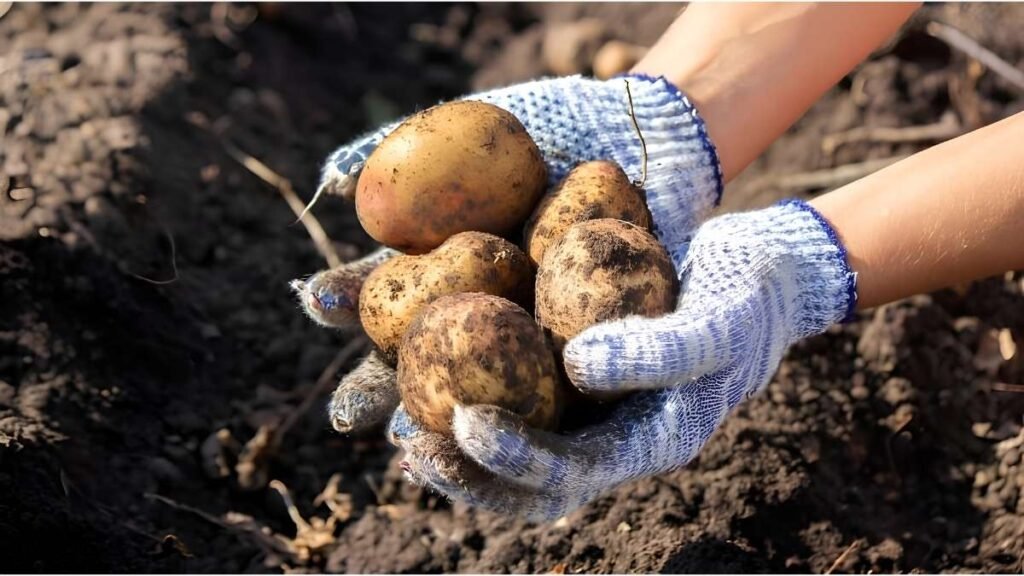
For new potatoes, harvest them early, when the tubers are small and tender. For larger potatoes, allow them to stay in the ground until they’ve reached the desired size. After harvesting, brush off any excess soil and allow the potatoes to cure in a cool, dark, and dry place for a few days. This helps to harden their skins and prolong their shelf life.
Storing and Using Your Organic Potatoes
Once cured, store your organic potatoes in a cool, dry, and dark location. Avoid storing them in the refrigerator, as cold temperatures can cause the potatoes to become sweet and alter their texture. Instead, place them in a burlap sack or a cardboard box with good ventilation.
Your homegrown organic potatoes can be used in a variety of dishes, from mashed potatoes to roasted fries or creamy potato salad. The satisfaction of eating your own homegrown produce makes the effort well worth it.
Conclusion
Growing organic potatoes in bags is a simple and effective method for those without a garden. By choosing the right variety, using high-quality soil, and providing proper care, you can grow a healthy crop of potatoes in limited space. This method not only provides you with fresh, organic potatoes but also offers the joy of gardening without the need for a traditional garden plot. So, whether you’re in a city apartment or on a small patio, you can easily enjoy the fruits (or tubers) of your labor.

